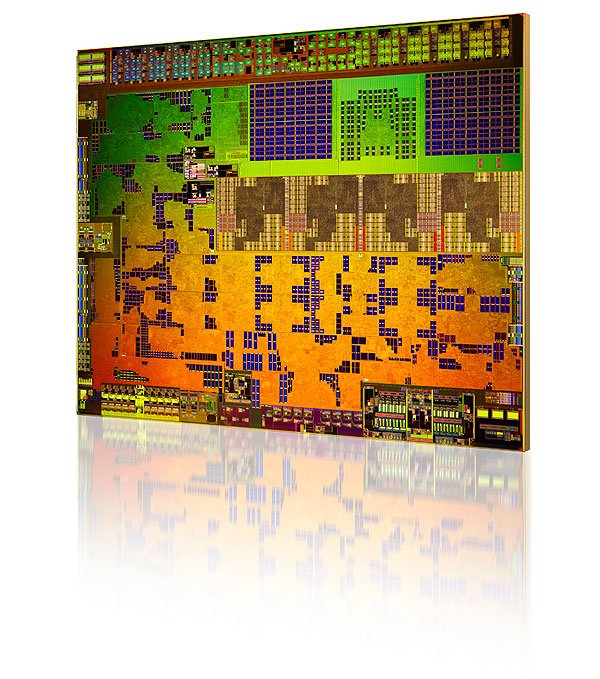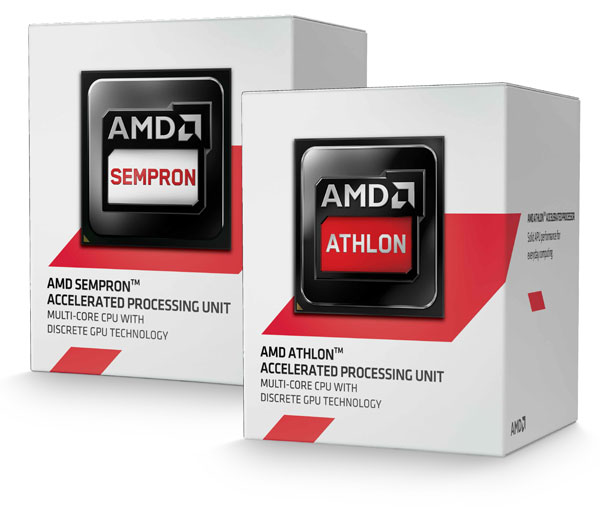AMD Athlon 5350 And AM1 Platform Review: Kabini In A Socket
AMD is repackaging the mobile-focused Kabini APU for use on the desktop, and tucking them under the familiar Athlon and Sempron brands. We take a closer look at the company's socketed AM1 platform and compare its performance to Intel's Bay Trail-D.
The AM1 Platform: Kabini Surfaces On The Desktop

AMD started banging the Accelerated Processing Unit (APU) drum shortly after purchasing ATI. But it wasn't until the company introduced its Jaguar architecture that we saw uptake really garner the big headlines. In rapid succession, AMD found its hybrid technology in the Xbox One, PlayStation 4, and E- and A-series Mobility APUs (code-named Kabini and Temash) for mobile devices running Windows.
If you're not familiar with the Jaguar design, it's an evolution of AMD's Bobcat architecture, which we first looked at back in 2010. The goal this time around was to improve Bobcat's modest performance by augmenting the amount of work it could do per clock cycle. AMD also gave Jaguar support for more modern instruction set extensions like SSE 4.1/4.2 and AVX. Of course, in the process, APUs equipped with Jaguar get an updated on-board graphics engine. Gone is the VLIW-based design prevalent in Radeon HD 6000-and-newer GPUs, replaced by Graphics Core Next.
The Kabini-based APUs leverage up to four Jaguar cores and as many as 128 GCN-based shaders. If you want more technical depth on that processor, have a look at AMD's Kabini: Jaguar And GCN Come Together In A 15 W APU.

Almost a year has passed since our first look at Kabini. Originally, AMD positioned the APU as mobile-focused, ideal for low-power devices wielding the flexibility of x86. More recently, the company revealed its intention to sell the chip into a desktop platform called AM1 as well, built around its FS1b processor interface.
Of course, AMD's marketing machine is aflutter, calling AM1 the world's first "system in a socket," since Intel's Bay Trail-D design isn't upgradeable. It's an embedded configuration with a soldered-down SoC. Indeed, most of the Bay Trail-equipped boards we've seen so far appear best suited to industrial applications. In contrast, AM1 motherboards seem more desktop-like, supporting up to 16 GB of DDR3 memory and accommodating active cooling.
| Header Cell - Column 0 | Athlon 5350 | Athlon 5150 | Sempron 3850 | Sempron 2650 |
|---|---|---|---|---|
| CPU Cores | 4 | 4 | 4 | 2 |
| Clock Rate | 2.05 GHz | 1.6 GHz | 1.3 GHz | 1.45 GHz |
| GPU Frequency | 600 MHz | 600 MHz | 450 MHz | 400 MHz |
| Memory Data Rate | 1600 MT/s | 1600 MT/s | 1600 MT/s | 1333 MT/s |
| Total Cache | 2 MB | 2 MB | 2 MB | 1 MB |
| TDP | 25 W | 25 W | 25 W | 25 W |
| MSRP | $59 | $49 | $39 | $34 |
AMD is shipping AM1-capable APUs under the company's Athlon and Sempron brands. Currently, all of the available models are rated for 25 W and feature 128 shaders, although the graphics engine ranges from 400 to 600 MHz, depending on the specific implementation. Three of the four chips come with four cores and 1600 MT/s memory support, while the lowest-priced Sempron 2650 is a dual-core version with a 1333 MT/s transfer rate cap. Core frequencies range from 1.3 to 2.05 GHz, which does serve to hold back performance. Then again, Intel is shipping similar to slightly higher clock rates on its Silvermont-based CPUs (Intel Silvermont Architecture: Does This Atom Change It All?).
| Header Cell - Column 0 | Pentium J2900 | Celeron J1900 | Celeron J1800 |
|---|---|---|---|
| CPU Cores | 4 | 4 | 2 |
| Base/Turbo Boost Clock Rate | 2.41/2.67 GHz | 2/2.42 GHz | 2.41/2.58 GHz |
| Dynamic GPU Clock Range | 688/896 MHz | 688/854 MHz | 688/792 MHz |
| Memory Data Rate | 1333 MT/s | 1333 MT/s | 1333 MT/s |
| Total Cache | 2 MB | 2 MB | 1 MB |
| TDP | 10 W | 10 W | 10 W |
At least in this segment, AMD and Intel are topping out with four cores (the Jaguar architecture can continue scaling, as it does in the Xbox and PlayStation, while Silvermont does as well in the Atom C2000 family). Intel's solution uses less power. However, the company's HD Graphics engine is also less capable. And memory support is limited to 1333 MT/s across the Bay Trail-D platform.
Get Tom's Hardware's best news and in-depth reviews, straight to your inbox.
We'd expect AMD's socketed Kabini platform to be faster than the competition from Intel, based on all of those specifications, though Bay Trail-D may be more efficient. Let's take a closer look at the hardware for more detail.
Current page: The AM1 Platform: Kabini Surfaces On The Desktop
Next Page One Bay Trail-D And Two AM1 Motherboards-
AMD Radeon i hope mini office pc box can be a new trendReply
AM1 can be a potential winner in this market -
Maxx_Power To Toms:Reply
What was the ambient temperature during the testing ? Surely Toms is not testing in an refrigerator ? That idle GPU and CPU temperature at 13 degrees Celsius seems about 10 degrees too low, given that they have to be necessarily above ambient conditions to make physical sense. Perhaps the sensors are not read correctly (wrong offset) ?
For the Dota2 graphs, there seems to be a mistake for the color legend. The difference in color isn't resolution, since the resolution is fixed (right hand top corner of graph at 1080), so my guess is that red/black represents min/avg FPS similar to the 2nd graph on Grid2.
-
nezzymighty Thanks for the article. I agree with your conclusion, as I would probably seek an alternative build for a a "PC-Like Device" as you put it. Seeing AM1 product costs relatively the same to an A4-4000 FM2+ confuses me, as I had originally expected (hoped) AM1 high-end combinations with a motherboard to cost around the $70 mark... If I were to make an AMD HTPC, or a typical AMD business computer, based on prices released by the e-tailers today, it would make more sense for me to build an FM2+ with A4-4000. Maybe prices will reduce in time to make this a more attractive alternative relative to an FM2+ for an HTPC or business computer.Reply -
ykki "Based on our results, I'd guess that AMD's AM1 platform should be able to handle less-demanding MMOs like World of Warcraft, lightweight shooters like Left 4 Dead, and a wide range of even more casual games (such as Angry Birds)."Reply
I think that it is safe to say that it can max out angry birds at 4k :) -
cleeve Reply13061890 said:To Toms:
What was the ambient temperature during the testing ? Surely Toms is not testing in an refrigerator ? That idle GPU and CPU temperature at 13 degrees Celsius seems about 10 degrees too low, given that they have to be necessarily above ambient conditions to make physical sense. Perhaps the sensors are not read correctly (wrong offset) ?
On-die sensors are notoriously inaccurate at low temperatures. In this case that's obvious, but we can only report what the sensors tell us.
13061890 said:For the Dota2 graphs, there seems to be a mistake for the color legend. The difference in color isn't resolution, since the resolution is fixed (right hand top corner of graph at 1080), so my guess is that red/black represents min/avg FPS similar to the 2nd graph on Grid2.
Good catch! Fixed. :)